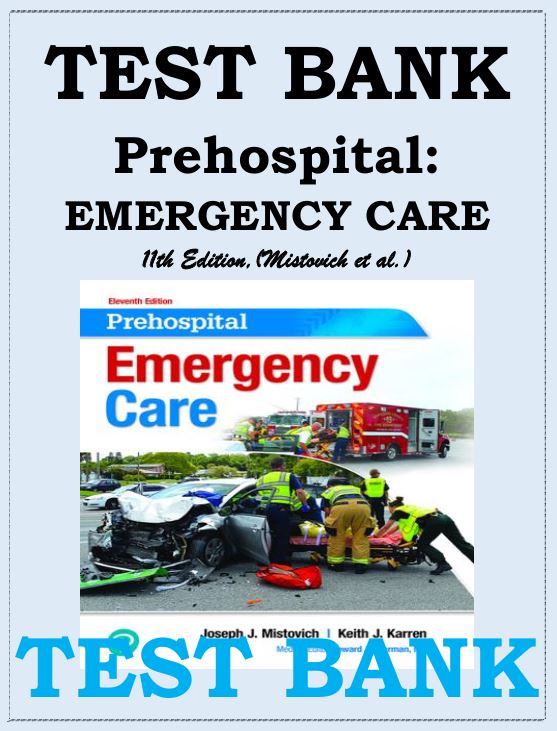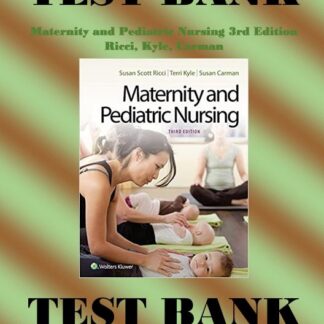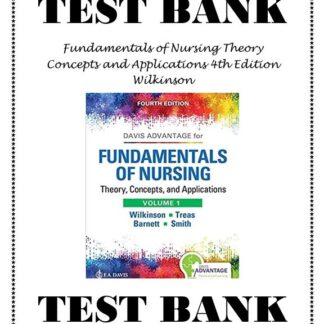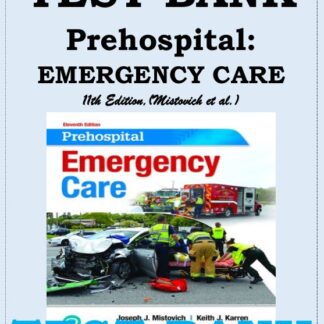Description
Prehospital Emergency Care, 11e (Mistovich et al.)
Chapter 1: Emergency Care Systems, Research, and Public Health
1) What is a primary purpose of the modern-day EMS system?
A) Provide a means of transport to and from the hospital
B) Ensure that all members of society have equal access to hospitals
C) Decrease the incidence of death and disability related to injury and illness
D) Provide emergency health care services to medically underserved areas
Answer: C
Diff: 2
Page Ref: 7
Objective: 1-2
2) Most authorities agree that the modern-day EMS system evolved after the release of which
document?
A) The Emergency Medical Services Act of 1973
B) The white paper “Accidental Death and Disability: The Neglected Disease of Modern
Society” in 1966
C) The American Heart Association’s Guidelines for Cardiac Resuscitation
D) Emergency Medical Services: Agenda for the Future, in 1996
Answer: B
Diff: 1
Page Ref: 3
Objective: 1-2
3) An Emergency Medical Responder comes to you and states that he would like to work for
your emergency ambulance service on a full-time basis. Knowing the National EMS Scope of
Practice Model, you inform him of which element?
A) He will be able to take care of only patients with non-life-threatening complaints
B) He will first need approval from your ambulance service’s medical director
C) He will be able to work only with an Advanced EMT or paramedic
D) He will first have to become an Emergency Medical Technician
Answer: D
Diff: 1
Page Ref: 6-7
Objective: 1-1
4) As defined by the National EMS Scope of Practice Model, the four levels of EMS
practitioners include:
A) Ambulance drivers
B) EMS medical director
C) Paramedics
D) Emergency medical dispatchers
Answer: C
Diff: 1
Page Ref: 6-7
Objective: 1-3





Reviews
There are no reviews yet.